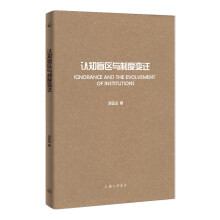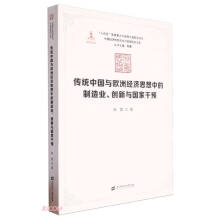上篇 中文部分
第一章 绪论
一、研究背景及意义
二、文献综述
三、概念界定及理论基础
四、研究方法
五、操作路线
第二章 二阶观察与中国扶贫政策变迁
一、整体模式扶贫:以体制改革促进扶贫阶段(1978-1986年)
二、开发模式扶贫:区域开发式扶贫阶段(1986-1992年)
三、经济模式扶贫:市场经济针对性反哺的项目制扶贫阶段(1993一2000年)
四、行动模式扶贫:以村庄为基础的参与式扶贫阶段(2001-2012年)
五、社会扶贫模式:精准扶贫阶段(2013-2020年)
六、精准扶贫策略的特征分析
第三章 等值功能主义与精准扶贫政策体系
一、互动系统
二、组织力量系统
三、整体帮扶系统
四、社会监督与考核系统
第四章 系统理性与精准扶贫实践方略
一、精准识别子系统:追求公平正义
二、精准帮扶子系统:注重协调发展
三、精准管理子系统:重视制度创新
四、精准考核子系统:坚持系统思维
五、小结
第五章 全面耦合:中国精准扶贫模式分析
一、理论来源:结构与系统
二、理论界定:系统与耦合
三、理论结构:四重耦合
四、理论意义:社会整合与融合
第六章 系统理论与典型国家扶贫比较
一、印度的扶贫经验
二、巴西的扶贫经验
三、墨西哥的扶贫经验
四、典型国家扶贫经验比较
第七章 总结与展望
一、精准扶贫政策的社会成效
二、精准扶贫策略的社会创新性
三、精准扶贫与后扶贫时代的脱贫巩固问题
四、发展中国家扶贫工作建议与世界减贫的未来
参考文献
下篇 英文部分
Chapter One: Introduction
I Research Background and Significance
Ⅱ Literature Review
Ⅲ Definitions and Theoretical Basis
Ⅳ Research Method
V Technology Route
Chapter Two: Second-order Observation and the Changes of China's
Poverty Alleviation Policies
I Overall Mode of Poverty Alleviation: Promoting Poverty
Alleviation through System Reform (1978-1986)
II Development Mode Poverty Alleviation: Regional Development
Stage of Poverty Alleviation (1986-1992)
Ⅲ Poverty Alleviation in the Economic Mode: Project-based Poverty
Alleviation Stage of Targeted Feedback from Market Economy (1993-2000)
Ⅳ Action Mode for Poverty Alleviation: Village-based Participatory
Poverty Alleviation stage (2001-2012)
V Social Mode for Poverty Alleviation: Targeted Poverty Alleviation
Stage (2013-2020)
V Analysis of the Characteristics of Targeted Poverty Alleviation
Strategies
Chapter Three: Equivalent Functionalism and the System of Targeted
Poverty Alleviation Policy
I Interactive System
Ⅱ System for Organizing Forces
Ⅲ Integrated Poverty Alleviation System
IV Social Supervision and Assessment System
Chapter Four: Systematic Rationality and Strategy of Targeted
Poverty Alleviation Practice
I Accurate Identification Subsystem: Pursuing Fairness and Justice
Ⅱ The Subsystem of Targeted Poverty Alleviation: Focusing on
Coordinated Development
Ⅲ The Subsystem of Accurate Management: Attaching Importance to
System Innovation
IV The Subsystem of Accurate Assessment: Adhering to Systematic
Thinking
V Summary
Chapter Five: Comprehensive Coupling: Analysis of China' s Targeted
Poverty Alleviation Mode
I Theoretical Source: Structure and System
Ⅱ Theoretical Definitions: System and Coupling
Ⅲ Theoretical Structure: Quadruple Coupling
Ⅳ Theoretical Significance: Social Integration and Unity
Chapter Six: The Comparison between System Theory and Poverty
Alleviation in Typical Countries
I India's Experience in Poverty Alleviation
Ⅱ Brazil's Experience in Poverty Alleviation
Ⅲ Mexico's Experience in Poverty Alleviation
Ⅳ Comparison of the Experience of Poverty Alleviation in
Typical Countries
Chapter Seven: Summary and Prospect
I The Social Effectiveness of Targeted Poverty Alleviation Policies
Ⅱ The Social Innovation of Targeted Poverty Alleviation Strategies
Ⅲ Targeted Poverty Alleviation and the Consolidation of Poverty
Alleviation in the Post-poverty E
展开










